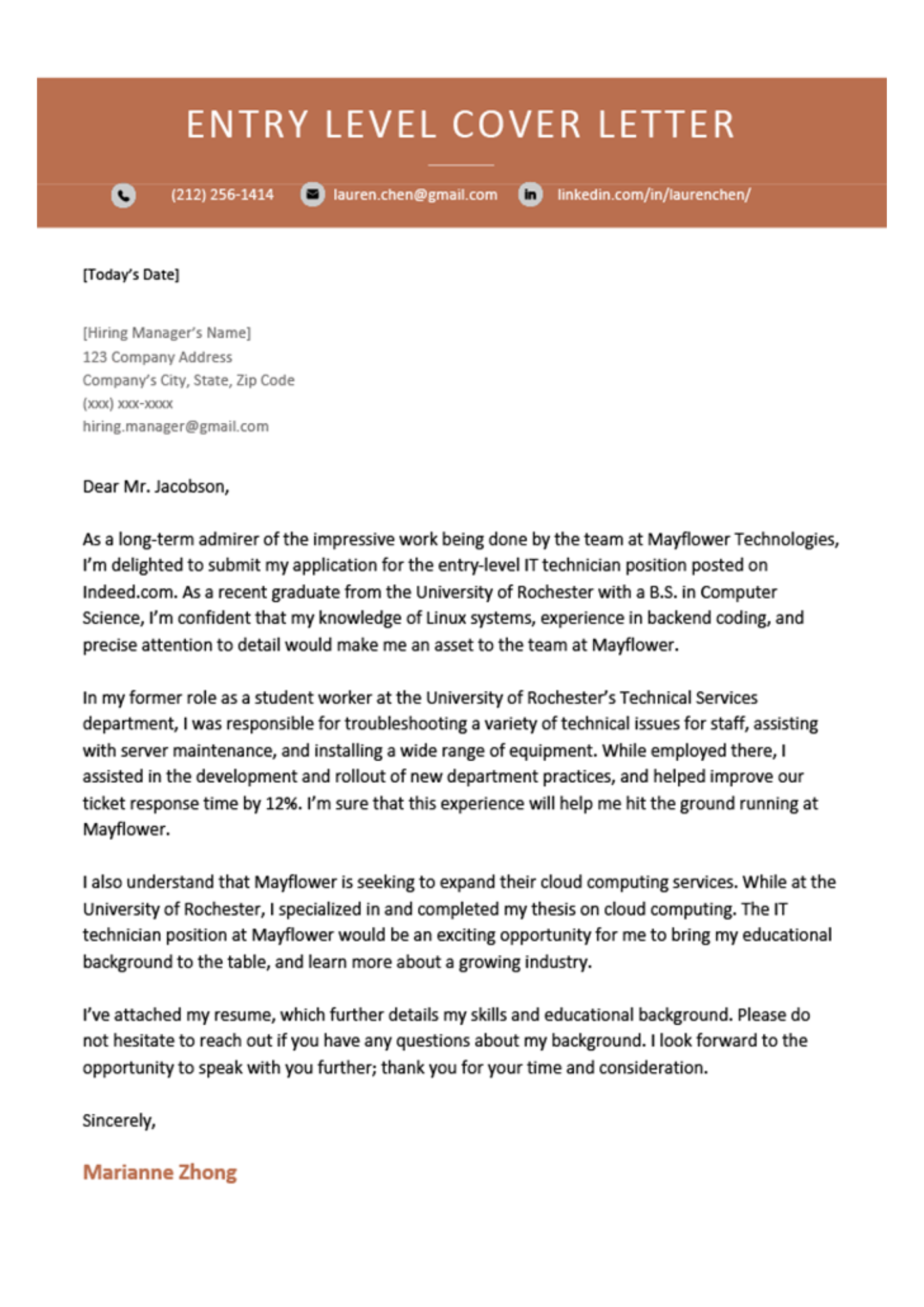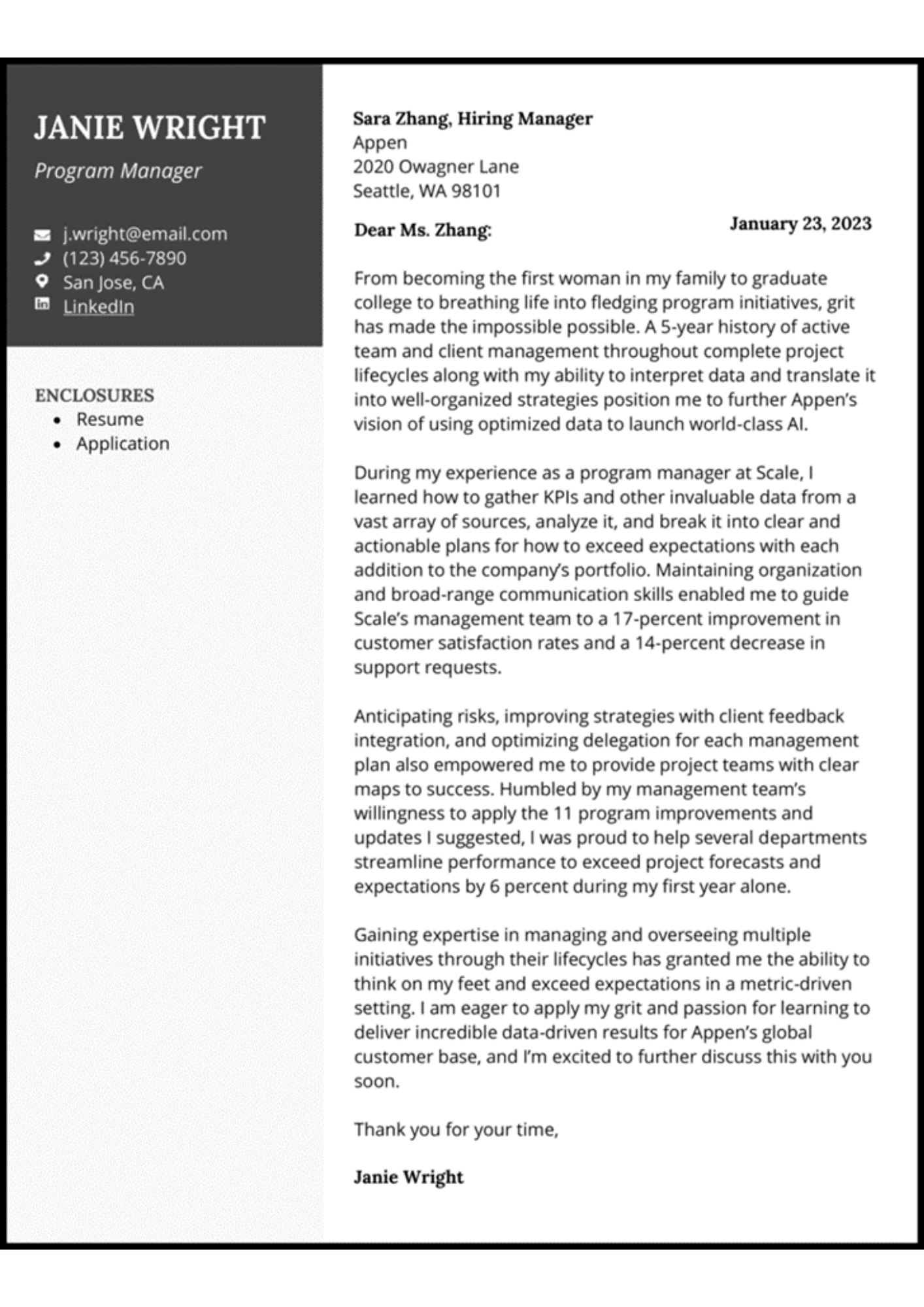How To Write a Cover Letter
A cover letter is your chance to introduce yourself to a potential employer and spark their interest in reading your resume. When you’re prepping job applications, a cover letter might seem like an afterthought compared to your resume. But your cover letter is worth just as much attention. That doesn’t mean it needs to be overly detailed – in fact, a simple single page is best. Here are the key points to know about cover letters, plus the steps to follow to write one.
What is a cover letter?
A cover letter is a short letter that accompanies your resume when you apply for a role. It’s often the first point of contact you make with a potential employer, hiring manager or recruiter for a job application.
It’s a way to give the employer a sense of who you are, highlighting your skills and experience, before they read the information in your resume. Just as if you were meeting someone for the first time, you’d introduce yourself first before getting into the detail.
Sometimes, a short email can take the place of a cover letter, but the way you write it is much the same.
How does a cover letter compare to your resume?
Your resume and cover letter complement each other but do slightly different things. Your resume summarises the key details of your skills, work experience and education. Resumes are best formatted with bullet points and broken into sections with subheadings, across about two pages.
A cover letter is shorter and sharper: a single page is best. It’s also more of a conversation opener – you’re speaking to the person responsible for the role you’re applying for, expressing your interest in the job and showing them why you’re a good fit for it.
The language in a cover letter is more personal. For example, a social worker’s resume might include; Redeveloped community youth program, increasing participation by 20 per cent.
But in a cover letter you can write in the first person, which might read as; I’m a dedicated and driven social worker, with a strong commitment to supporting disadvantaged youth.
It’s a chance to describe your skills and experiences in a way that also gives some insight into you and your career.
How to write your cover letter
1) Start with a brief introduction about yourself and why you’re writing. Mention the job you’re applying for and your interest in it.
2) Give a snapshot of the relevant skills, experience, and qualifications you have that relate to the job. Think about the key two or three points in your resume and explaining these in a way that links them to why you’d be great for the role.
3) Give examples of your skills or mention how you’ve used them – you might need to do this in more detail if the job ad requests that you address selection criteria.
4) Mention that your resume is attached. To finish, you can say that you’d welcome the opportunity to meet to discuss the role, or that you’re happy to provide more information, before signing off.
How to make your cover letter stand out
A cover letter should be engaging – you want to capture the interest of the person reading it so that they turn to your resume to find out more.
It’s also about showing the employer how your skills and experience are a good match for the role. That’s why you should always create a cover letter especially for the role you’re applying for – it shouldn’t be a generic letter. These tips can help you tailor your cover letter to the job.
A good cover letter can also demonstrate your written communication skills. Write for the environment you’re applying to: if it’s a more informal workplace or a creative type of work, don’t be afraid to inject some personal style into your writing to stand out.
Quick tips for improving your cover letter
- Use clear, concise language. It’s best to avoid complicated or flowery wording.
- Avoid overly long sentences. Try reading it aloud to see if there are any you struggle with.
- Always tailor your cover letter to the job. An application is all about showing how you’re a good fit for the role on offer, and you don’t want your cover letter to seem reused.
- Triple check your spelling and grammar. Try printing your letter out then coming back to it fresh or get someone with a keen eye to look over it for you.
- Keep your letter to around 250-350 words on a single page.
- Have a look at the below cover letter template as a guide, as well as some examples of cover letters written by successful job seekers…
Cover Letter Template
<Your name here>
<Your contact number>
<Your email address>
<Suburb, State POSTCODE>
<Date>
<Hiring manager’s name>
<Company>
<Company address>
<Suburb, State POSTCODE>
Dear <insert hiring manager’s name>,
Re: <insert role title> position
<Beginning a career opener example>
I’m starting out my career in <insert industry name> with a strong focus on <insert relevant technical skill>. That’s why <insert role title> role is so appealing to me.
OR
<Industry-specific opener example>
I’ve always appreciated uniqueness when it comes to homewares, and prided myself on helping others to furnish their homes in a way that tells the unique story of their life. That’s why I was so excited to see the position of <insert role title> at <insert company name> advertised on SEEK.
OR
<Company-specific opener example>
<Company name> has been of interest to me since embarking on its mega store approach to retail. I was also impressed with the profile of your managing director <name>, which I read in the Retail Journal late last year.
I’m confident that I am a great match for the role of <insert role name>, and can use my skills, experience and attributes to help <insert company name> reach your goals:
<Experience>
Include a sentence on your relevant experience.
For example: ‘I have six years’ experience working on the shop floor in two highly competitive industries.’ Also highlight any specific industry knowledge that you can bring to the role.
<Skills> Highlight your most important core skills that talk to the key selection criteria for the role, e.g., ‘I have strong written and verbal communication, and I am able to work to tight deadlines.’
<Attributes> Include any personal attributes that show you are an excellent fit for this specific role, e.g., ‘I pride myself on being proactive. I developed a new training process and accompanying manual for new starters,’ or ‘I’m a strong leader and enjoy motivating my team. I manage three salespeople that have continued to hit targets, month on month.’>
<Performance>. Promote a key achievement or result you’re proud of that specifically relates to the role. For example: ‘In my time at my current place of employment I have signed on 85 new clients and exceeded sales targets by 20% in two consecutive years.>
I welcome the opportunity to speak with you in more detail about this position and how I could use my skills to benefit your organisation.
Thank you for considering my application. I look forward to hearing from you.
Yours sincerely,
<Your name>
Examples of Cover Letters
Writing your cover letter might feel intimidating at first when you’re facing a blank page. But by following these steps and tips, you can focus on crafting a cover letter that captures what you can bring to the role and makes a winning impression on the employer.
Junior Cover Letter
Senior Cover Letter




